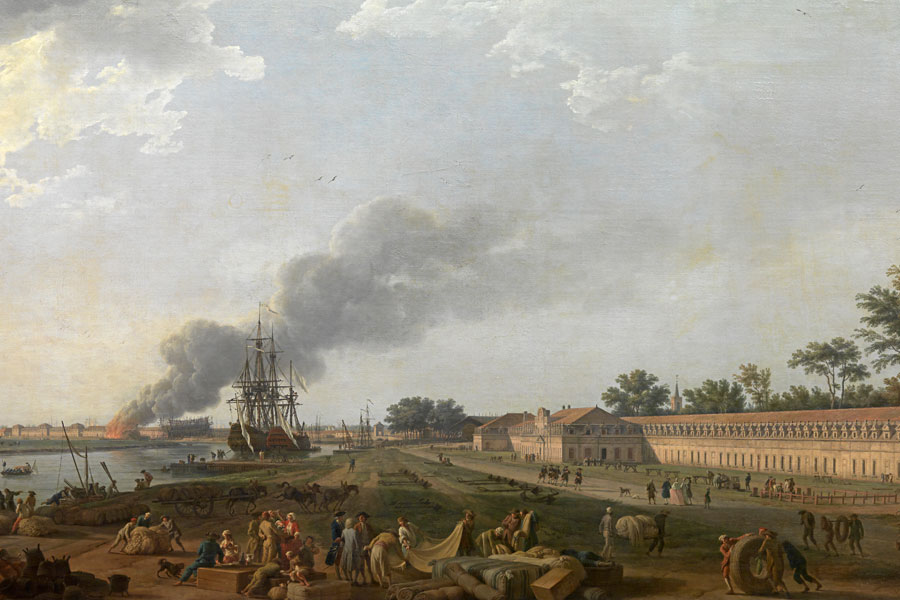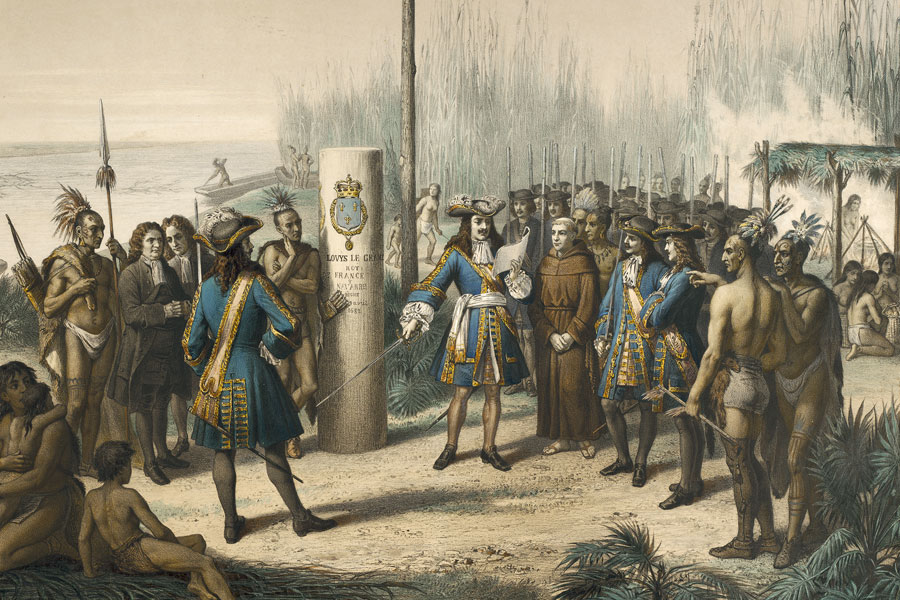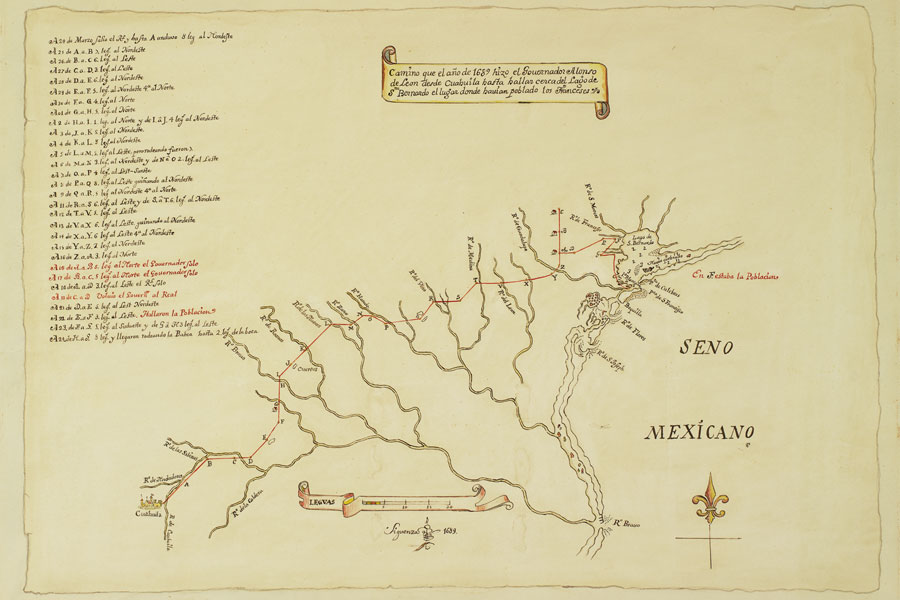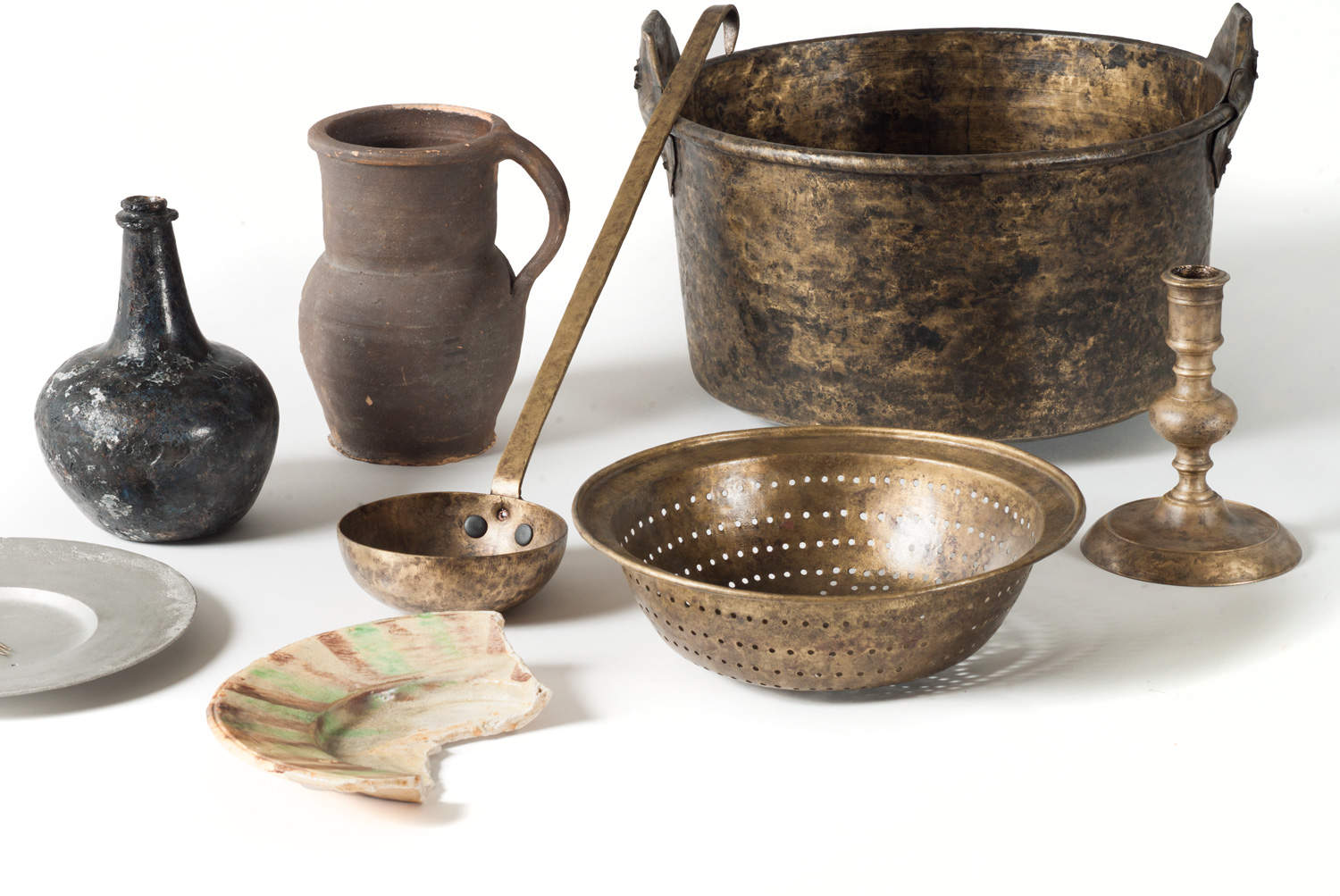How La Belle Changed History
Landing in the wrong place makes all the difference.
This webpage will be archived. Visit the Bullock Museum YouTube channel to view Texas Story Project videos, exhibit media, behind-the-scenes content, and more.
When he stepped aboard his ship in 1684, legendary French explorer René-Robert Cavelier, Sieur de la Salle, probably had a glorious picture in his mind of how the voyage would end. He would beat France's Spanish rivals to North America and the mouth of the Mississippi River and establish colonies there. The empire of le Roi Soleil, King Louis XIV, would extend its grasp across the vast ocean. After a celebratory sail home, he would bask in the warm glow of personal success and national gratitude. Unfortunately for La Salle, fate was looking at a completely different picture.
The voyage seemed plagued by bad luck from the beginning. Pirates stole one of La Salle's four ships as the expedition drew close to North America. Whether by miscalculation or poor navigation, La Salle missed the Mississippi entirely and ended up along the Texas coast. The second ship sank entering Matagorda Bay. The third ship turned back and sailed home to France. His last ship, La Belle, was battered by storms and sank to the muddy bottom of Matagorda Bay in 1686.
But the story of La Belle doesn't end there.
Three hundred years later, the ship has been raised from its watery grave and brought back to life. Extraordinary artifacts tell the complex stories of expedition and colonization. Equally extraordinary are the stories of the ship's discovery, unprecedented excavation, and painstaking conservation. La Belle may have been the ship that changed history, but it also changed science, pushing archaeological processes and technologies to the limits.
A magnificent historical icon, La Belle reveals new dimensions to Texas's French connection to world history and provides a critical lesson in the preservation, interpretation, and curation of one of the most compelling stories of our past.
Learn about the excavation and preservation of La Belle »
Banner image courtesy The Historic New Orleans Collection, Acc. No. 1970.1
La Belle Shipwreck Facts
-
 The Spanish were so intent on keeping the French out of Texas that they sent 11 expeditions by land and sea to find La Salle’s colony. One expedition found the wreck of La Belle in April, 1687. Another expedition found the remains of Fort St. Louis in 1689. Image courtesy © Musée national de la Marine/A. Fux, Paris, France
The Spanish were so intent on keeping the French out of Texas that they sent 11 expeditions by land and sea to find La Salle’s colony. One expedition found the wreck of La Belle in April, 1687. Another expedition found the remains of Fort St. Louis in 1689. Image courtesy © Musée national de la Marine/A. Fux, Paris, France -
 La Salle’s expedition goaded the Spanish into settling East Texas to protect their territory from the French. Ultimately, 26 Spanish missions were established in Texas resulting in a lasting legacy on Texas culture. Image courtesy The Historic New Orleans Collection, Acc. No. 1970.1
La Salle’s expedition goaded the Spanish into settling East Texas to protect their territory from the French. Ultimately, 26 Spanish missions were established in Texas resulting in a lasting legacy on Texas culture. Image courtesy The Historic New Orleans Collection, Acc. No. 1970.1 -
 Because of La Salle’s presence in Texas, the United States considered Texas to be part of the lands the French gained in the Louisiana Purchase. Spain and Mexico didn’t agree. Image courtesy Bryan (James Perry) Papers, di_03214, The Dolph Briscoe Center for American History, The University of Texas at Austin
Because of La Salle’s presence in Texas, the United States considered Texas to be part of the lands the French gained in the Louisiana Purchase. Spain and Mexico didn’t agree. Image courtesy Bryan (James Perry) Papers, di_03214, The Dolph Briscoe Center for American History, The University of Texas at Austin -
 Among the artifacts found during the excavation of La Belle was a kit of supplies needed to establish a colony in North America. This collection of objects offers a rare opportunity to see what a 17th century settlement needed to survive. Nowhere else have these types of North American colonial artifacts been found so beautifully preserved and in such great numbers.
Among the artifacts found during the excavation of La Belle was a kit of supplies needed to establish a colony in North America. This collection of objects offers a rare opportunity to see what a 17th century settlement needed to survive. Nowhere else have these types of North American colonial artifacts been found so beautifully preserved and in such great numbers.

